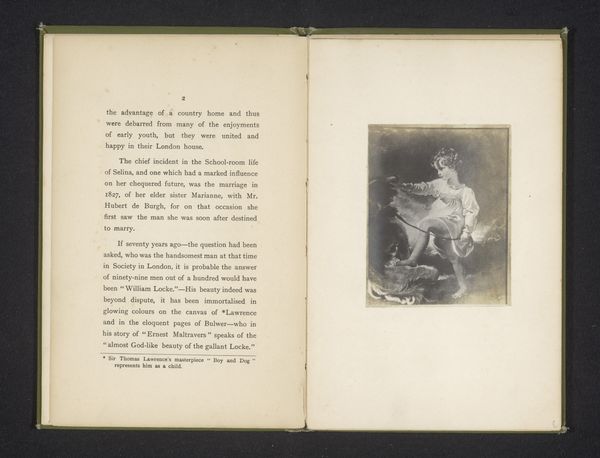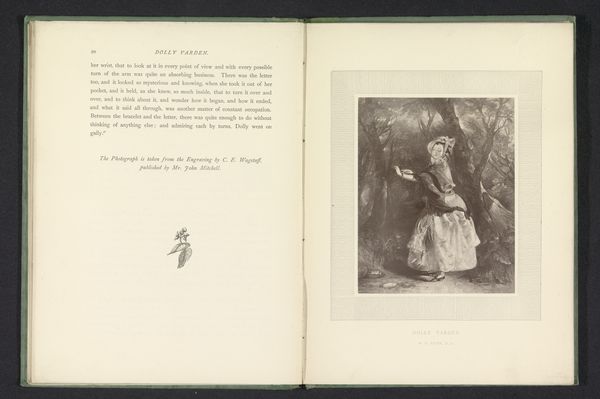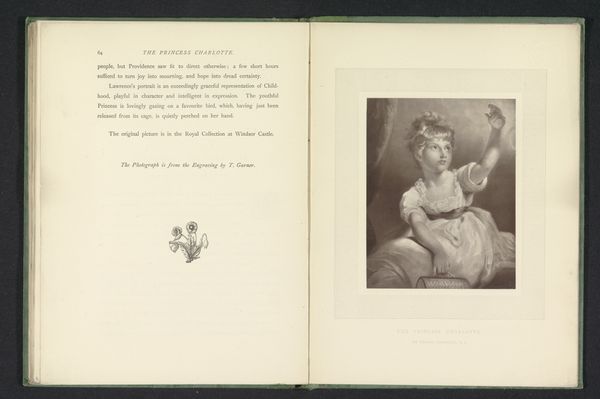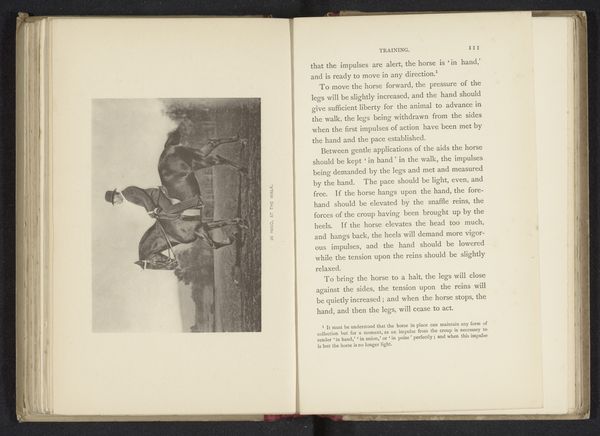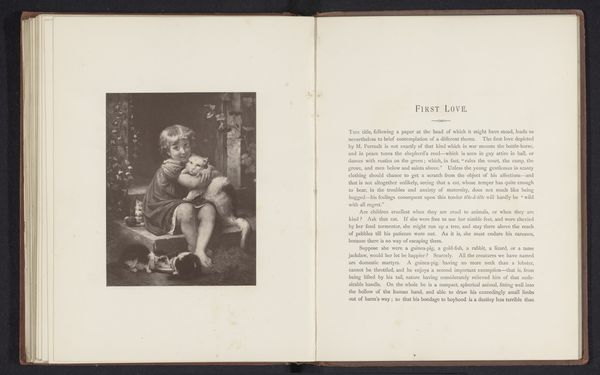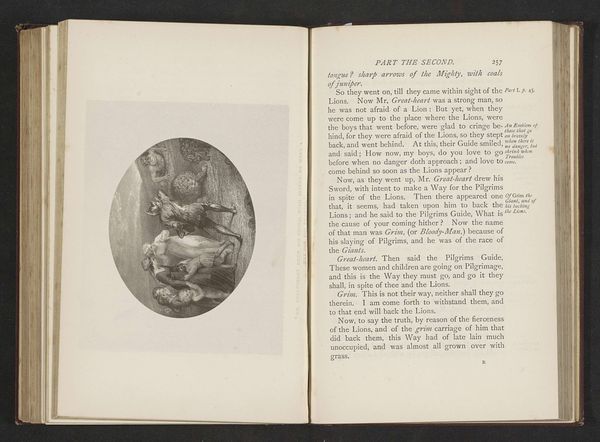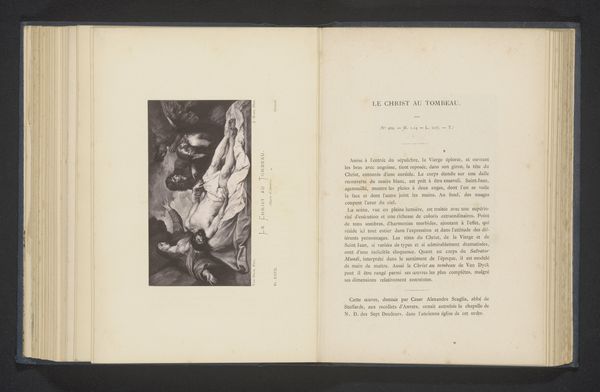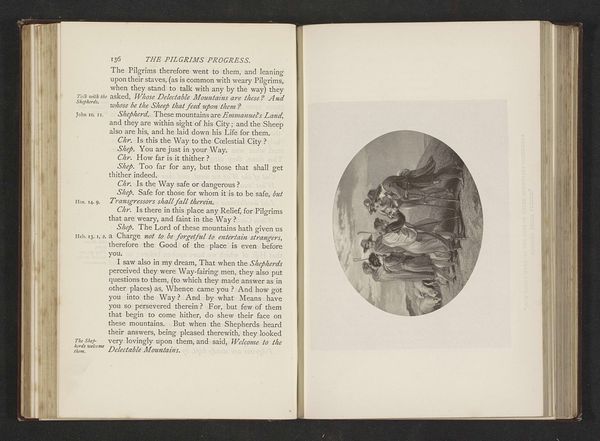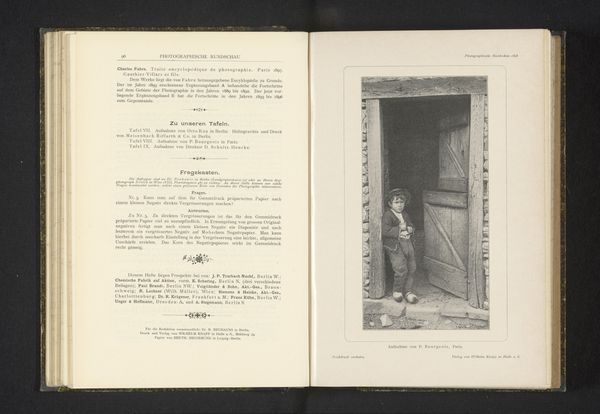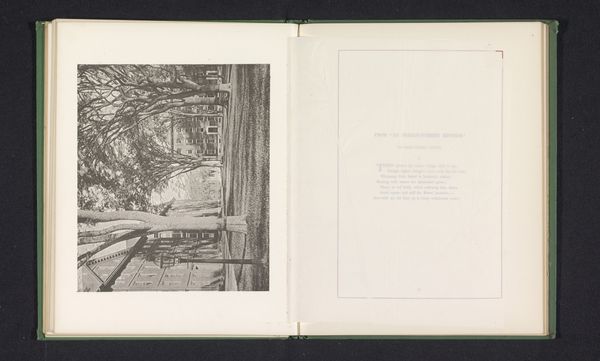
Fotoreproductie van een schilderij van oom Toby en weduwe Wadman uit Tristram Shandy door Charles Robert Leslie before 1873
0:00
0:00
print, etching
#
portrait
# print
#
etching
#
genre-painting
Dimensions: height 158 mm, width 118 mm
Copyright: Rijks Museum: Open Domain
Curator: Here we have a photographic reproduction of Charles Robert Leslie's painting, "Uncle Toby and the Widow Wadman," dating from before 1873. It appears to be an etching of a genre painting, reproduced within a book. What strikes you first? Editor: There’s an immediate sense of playful secrecy here. The figures are positioned close, almost conspiratorially, like they are sharing an intimate, maybe forbidden moment. I am curious what gestures and motifs recur across this artist's oeuvre. Curator: It is indeed from the sentimental and humorous novel "Tristram Shandy," Laurence Sterne's famous work. Considering the etching medium, notice how the textures are rendered—particularly in the fabrics. This print is meant to translate painting for wider circulation. I wonder about its intended audience, who are these readers? Were they different social strata, maybe exposed now to fine art due to developments in printing? Editor: Well, the story itself involves characters deeply intertwined with themes of sentimentalism, affection, even military symbolism. The ‘Uncle Toby’ figure often symbolizes naive goodness. Notice the visual cue of their proximity. This closeness of figures signals shared affection. The widow seems poised to hear something critical, a proposal? Curator: And consider that the source of the print is itself noted, in the book it appears to come from a photograph from The South Kensington Museum, further muddying medium definitions. It reflects the 19th-century culture of readily reproducing and re-interpreting images, from one medium to another for greater accessibility. I want to research the publisher here too. Who distributed these works and how does this reflect a broader cultural agenda? Editor: That’s fascinating! And it impacts the aura of the scene itself! What originally might have been staged within the closed set of a painting, immediately then becomes something accessible within domestic sphere. A further sign of material culture intersecting in ways that broaden audience. We would need to unpack more around the novel, it’s publishing to know more of the class implications, Curator: Precisely. Thinking through materials allows unpacking the broader context. The photograph of the original work shows art entering and circulating into everyday experience and impacting ideas about romance, morality, class distinction... It reveals so much about the material life of art itself! Editor: Indeed! Looking at the visual elements, we sense the subtle shift, maybe less of a divine moment and instead something tangible that the general reading public now is able to also participate in, thanks to technology.
Comments
No comments
Be the first to comment and join the conversation on the ultimate creative platform.
